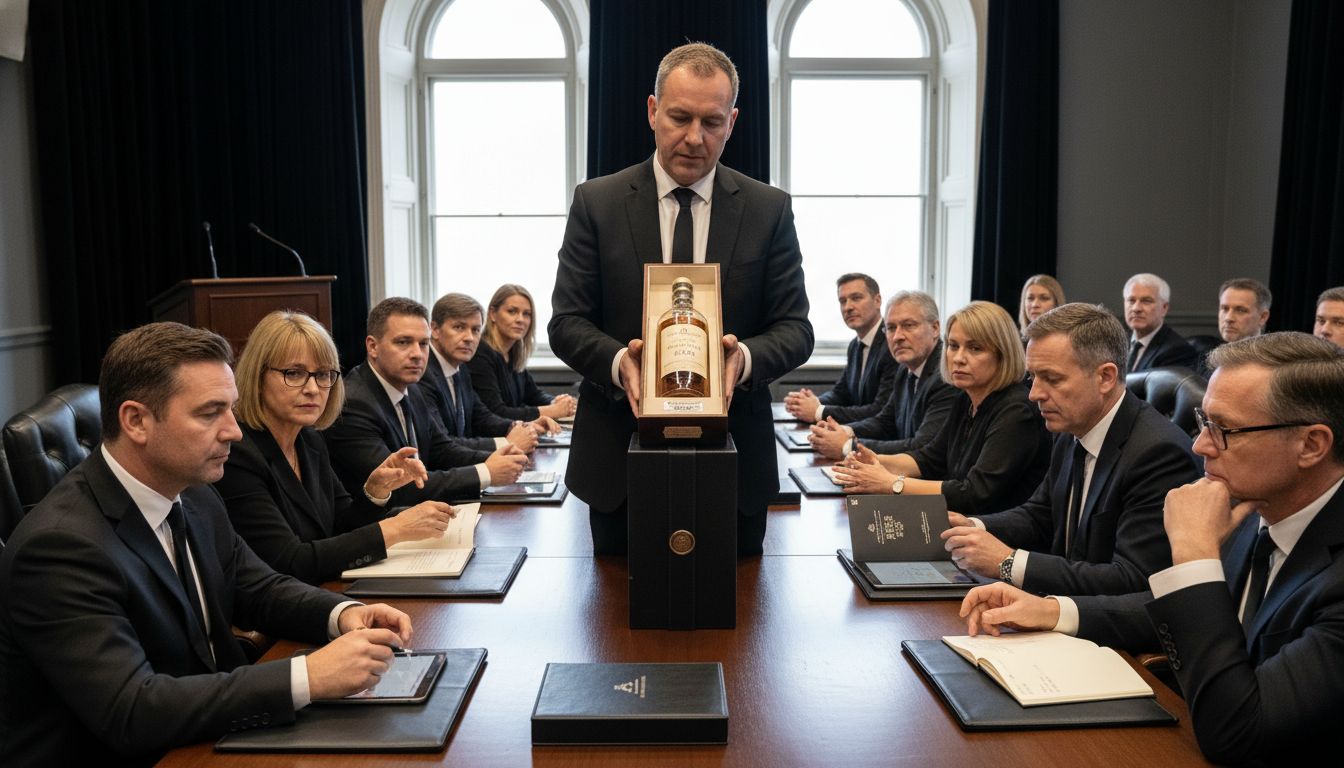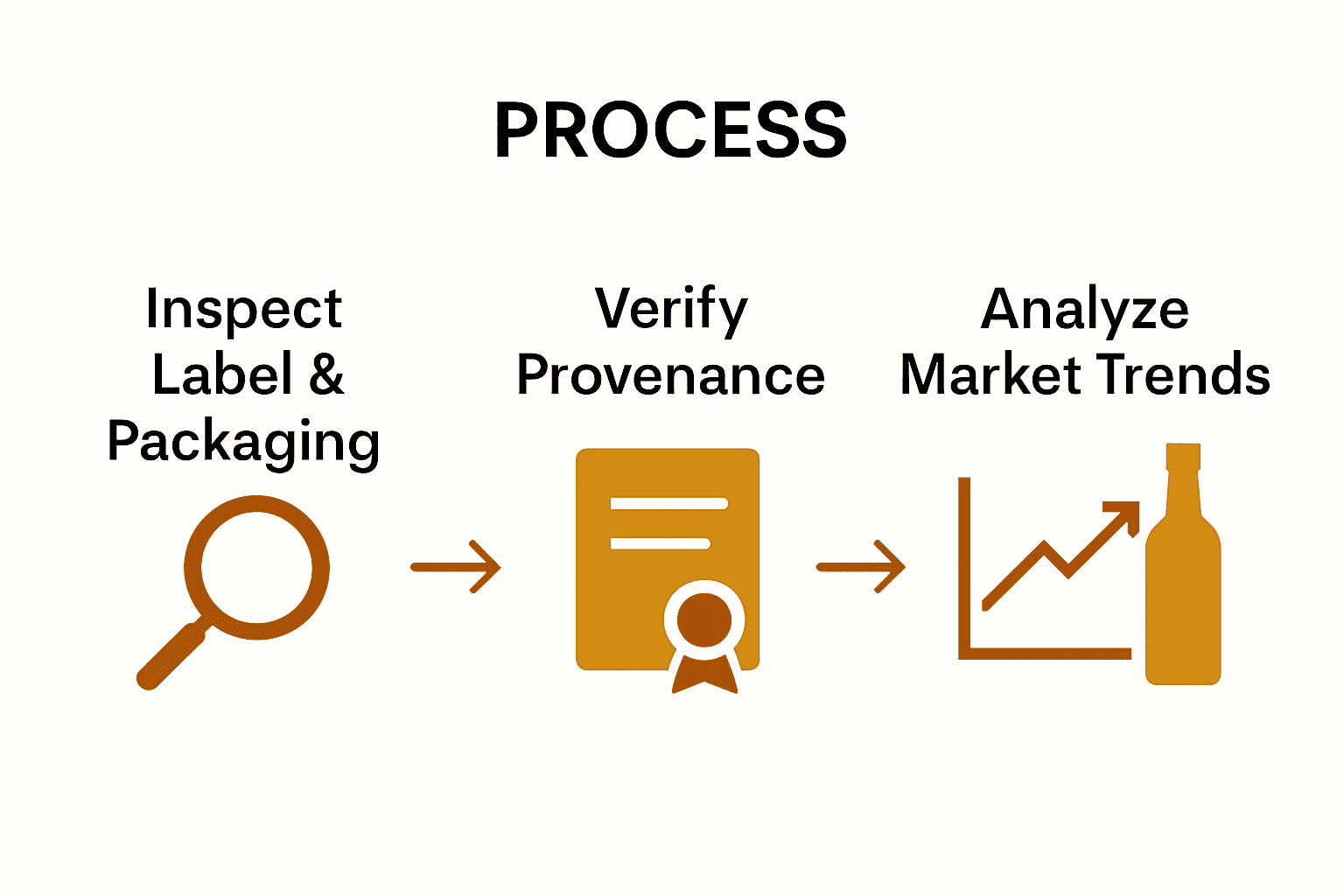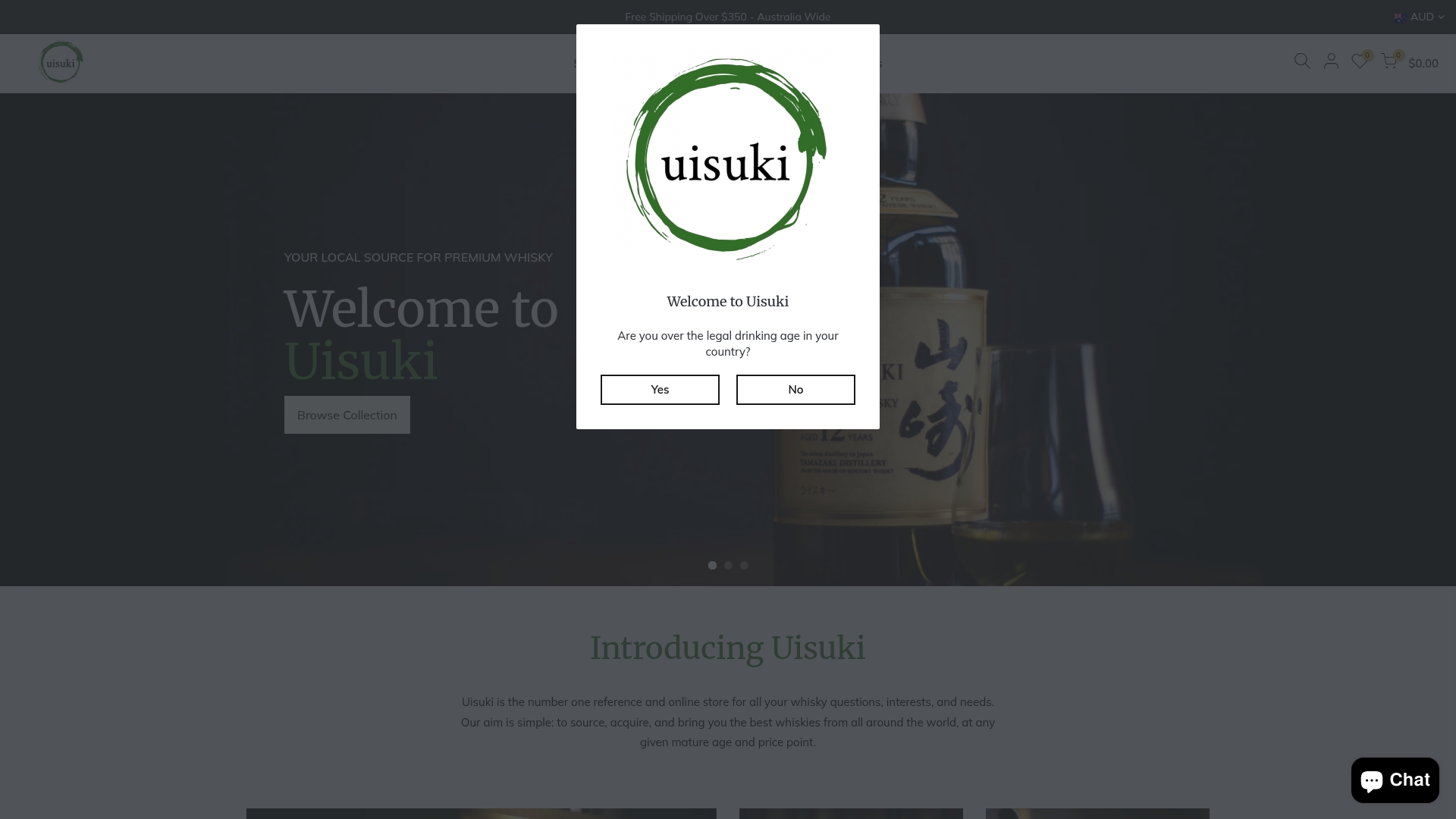Did you know some rare whiskies have sold for over $1 million at auction? For collectors and enthusiasts, spotting these hidden treasures goes far beyond stylish labels and clever marketing. Understanding what makes a whisky truly rare can mean the difference between an ordinary bottle and a prized collectible that could climb in value for years to come.
Table of Contents
- Step 1: Understand Key Markers Of Rare Whisky
- Step 2: Inspect Labels, Packaging, And Age Statements
- Step 3: Assess Production Details And Provenance
- Step 4: Verify Authenticity Through Trusted Sources
- Step 5: Evaluate Market Value And Collectability
Quick Summary
| Key Point | Explanation |
|---|---|
| 1. Identify markers of rarity | Look for unique packaging, limited production, and flavor profiles to determine a whisky’s rarity and value. |
| 2. Inspect labels and packaging carefully | Scrutinize details like font and seal authenticity to ensure the bottle is genuine and not counterfeit. |
| 3. Research production details thoroughly | Verify production dates and storage history to understand the whisky’s provenance and add to its value. |
| 4. Authenticate through trusted sources | Use reputable retailers and experts to ensure the authenticity of rare whiskies and protect your investment. |
| 5. Analyze market value comprehensively | Stay informed about auction trends and historical distillery significance to make educated decisions on whisky investments. |
Step 1: Understand key markers of rare whisky
Identifying rare whisky requires a keen understanding of several distinctive characteristics that set exceptional bottles apart from ordinary ones. According to House of Hazelwood, unique packaging, limited production runs, and distinctive flavor profiles are essential markers of rarity in the whisky world.
Collectors look for specific hallmarks that signal a whisky’s potential value and collectibility. Whisky Genius highlights that limited edition releases with well documented provenance are particularly prized. Bottles from closed distilleries or those with significant historical background often command higher interest among serious collectors. Key indicators include:
- Small batch production
- Cask strength bottlings
- Unique or commemorative packaging
- Limited numbered releases
- Historical significance of the distillery
When evaluating a rare whisky, pay close attention to the bottle’s authenticity documentation and provenance. Research the distillery’s history and the specific circumstances surrounding the whisky’s production. Understanding these nuanced details will help you distinguish truly exceptional bottles from merely marketed ones.
Step 2: Inspect labels, packaging, and age statements
Authentication of rare whisky demands meticulous examination of labels, packaging, and age statements that reveal the bottle’s true heritage. According to Whisky Estate, collectors must scrutinize every visual detail to detect potential inconsistencies.
Careful inspection involves checking multiple aspects of the bottle. Look for precise details such as font consistency, spelling accuracy, and design alignment with official distillery releases. Pay special attention to unique seals, embossing, and print quality that distinguish genuine rare whiskies from potential counterfeits. Professional collectors recommend examining these key elements:
- Label print clarity and resolution
- Consistent typography throughout packaging
- Authentic holographic or security seals
- Accurate spelling and grammatical precision
- Original distillery watermarks or emblems
While inspecting the age statement, verify the years listed match the distillery’s historical records. Cross reference the bottle’s details with official documentation and seek expert validation when uncertain. A thorough visual examination can reveal subtle nuances that separate genuine rare whiskies from sophisticated replicas.

Step 3: Assess production details and provenance
Delving into the world of rare whisky requires a deep understanding of its production history and lineage. Whisky Genius emphasises that a whisky’s provenance can significantly impact its value, with documented history and previous ownership playing crucial roles in determining collectibility.
Careful assessment of production details involves tracing the whisky’s journey from distillery to collection. Pay close attention to the bottle’s background, including its original production date, storage conditions, and any notable transfers of ownership. House of Hazelwood points out an interesting phenomenon known as the Angel’s Share, where natural evaporation over decades can affect the whisky’s strength and character.
Key aspects to investigate include:
- Original distillation date
- Specific barrel or cask information
- Storage and preservation history
- Previous collectors or notable owners
- Authenticity of ownership documentation
Ultimately, thorough provenance research transforms a simple bottle into a storied piece of liquid history. Each detail you uncover adds depth to the whisky’s narrative and can significantly enhance its collectible value.
Expert collectors understand that a well documented whisky tells a story far beyond its liquid contents.
Step 4: Verify authenticity through trusted sources
Authenticity represents the cornerstone of rare whisky collecting, protecting your investment and ensuring genuine collector value. Whisky Estate recommends purchasing only from reputable retailers or established auction houses to minimise the risk of acquiring counterfeit bottles.
Navigating the complex landscape of whisky authentication requires strategic approaches and expert validation. The most reliable methods involve cross referencing multiple trusted sources and obtaining professional assessments. Expert collectors suggest developing a comprehensive verification strategy that includes:
- Consulting specialist whisky authentication services
- Obtaining certificates of provenance from recognised experts
- Comparing details with official distillery records
- Engaging with established collectors and professional networks
- Requesting detailed photographic documentation
The Lactodorum Whiskey Club emphasises that sophisticated counterfeits can be challenging to detect, making professional verification crucial. Your diligence in authenticating rare whiskies will protect your collection and ensure you are investing in genuine liquid treasures.
Step 5: Evaluate market value and collectability
Understanding the market value of rare whisky requires a strategic approach that combines data analysis with expert insights. Rare Whisky 101 provides an extensive database with over 1.4 million records covering 86,011 different bottles, offering a comprehensive foundation for valuation research.
Collectors must develop a nuanced understanding of market dynamics and emerging trends. Whisky Genius recommends staying informed through multiple channels, including auctions and online forums that provide real time insights into whisky collectability. Critical factors influencing a bottle’s value include:
- Historical significance of the distillery
- Rarity of the production run
- Condition of the bottle and packaging
- Current market demand
- Unique characteristics or limited edition status
Successful whisky valuation requires patience, research, and a willingness to engage with the collector community. By systematically tracking market trends and understanding the unique story behind each bottle, you can make informed decisions that transform your collection into a valuable investment.

Discover and Own Rare Whiskies with Confidence
Spotting rare whisky requires careful attention to authenticity, provenance, and market value as expert collectors know. If you have felt unsure about verifying labels or wanted trusted sources to guide your choices, you are not alone. With the detailed insights from “How to Identify Rare Whisky: Expert Guide for Collectors,” you can gain clarity and take control of building a genuine collection.
Explore a curated selection of rare and hard-to-find whiskies at Uisuki where each bottle comes with complete descriptions and expert guidance to help demystify provenance and production details. Our platform supports collectors who seek authenticity backed by transparency and quality. Whether you are searching for limited edition releases or unique malts from historic distilleries, start your journey with confidence today.

Ready to elevate your whisky collection with assured rarity and value? Visit Uisuki to browse our exclusive range and learn more about our commitment to helping enthusiasts like you identify and acquire genuine treasures. Your next exceptional bottle is waiting, supported by expertise and a passion for whisky that you can trust.
Frequently Asked Questions
What are the key markers of rare whisky collectors should look for?
To identify rare whisky, collectors should focus on unique packaging, limited production runs, and distinctive flavor profiles. Look for characteristics such as small batch production, cask strength bottlings, and historical significance to assess potential value.
How can I authenticate a rare whisky bottle?
Authenticating a rare whisky involves careful inspection of labels, packaging, and age statements. Check for print clarity, correct spelling, and holographic seals, and verify details against documented distillery records.
What details about a whisky’s production should I assess for collectability?
When evaluating a whisky’s collectability, examine production details like the original distillation date, cask information, and storage history. Trace the whisky’s journey to ensure it has a documented and reputable provenance, which enhances its value.
How do I verify the authenticity of rare whisky?
To verify authenticity, develop a comprehensive strategy that includes consulting specialist authentication services and comparing bottle details with distillery records. Engage with established collectors to gather insights and request detailed documentation when necessary.
What factors influence the market value of rare whisky?
Market value is influenced by factors such as the historical significance of the distillery, rarity of the production run, and current market demand. Regularly analyze these aspects to stay informed and assess the potential appreciation of your collection.
How can I stay updated on emerging trends in rare whisky?
You can stay updated on emerging trends by following auctions, participating in online forums, and engaging with the collector community. Set aside time weekly to analyze recent sales and discussions to identify shifts in market value and collectability.

